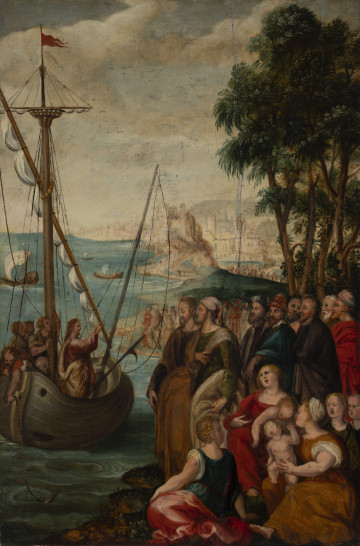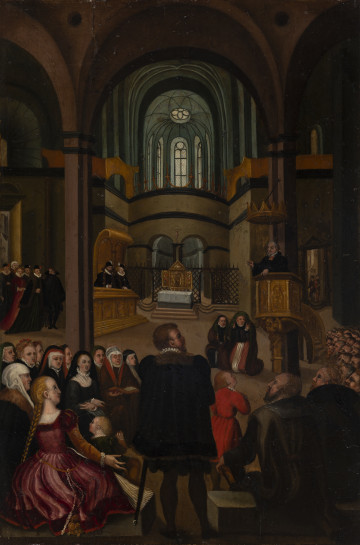
Kuszenie Chrystusa | Temptation of Christ
circa 1577
National Museum in Szczecin
Part of the collection: Craft and industry products of Szczecin
One of the most important differences between Protestantism and Catholicism is the approach to the sacraments, including baptism. Lutheranism, which was the main religion in West Pomerania from 1534 to 1945, assumes that baptism does not erase original sin, but is based on the faith of the baptised. In both denominations, however, one still goes through the rite of baptism mostly in infancy. The custom of giving children a baptismal gift in the form of a silver spoon as a wish for wealth and prosperity was known even before the Reformation in the form of an apostle's spoon, popular especially in England, the Netherlands and Germany. Initially, this tradition was common among the aristocracy, where precious metal cutlery was a symbol of wealth, prestige and social standing. The healing and epidemic-protective properties of silver were also important at a time of high infant and young child mortality. Over time, the wealthy bourgeoisie also began to cultivate this custom, and a saying found in Anglo-Saxon culture: born with a silver spoon in one's mouth, which also had its German equivalent: mit einem goldenen Löffel im Munde geboren sein, that described a person born not only into nobility but also into a wealthy family. The baptismal spoons of the past had a unique form and were often made to order by valued craftsmen who, in addition to finishing the handle with beautiful ornaments, could personalise the gift with an engraving of the child's name or the date of the baptism. Despite its unusual form, a baptismal spoon made in the second half of the 18th century by Johann Friedrich Timm (1728-1782) from the collection of the Szczecin History Museum is considered to be a baptismal spoon. Made of silver and gilded inside, the piece was provided with a goldsmith's mark of Szczecin in the form of a griffin's head and the author's initials. Małgorzata Peszko
Author / creator
Object type
ladle (spoon), ceremonial object
Technique
casting, repoussage, punching, gilding
Material
silver, wood
Origin / acquisition method
purchase
Creation time / dating
Creation / finding place
Owner
Muzeum Narodowe w Szczecinie
Identification number
Location / status

circa 1577
National Museum in Szczecin

3. ćwierć XVI wieku
National Museum in Szczecin

3. ćwierć XVI wieku
National Museum in Szczecin
DISCOVER this TOPIC
Museum of King Jan III's Palace at Wilanów
DISCOVER this PATH
Educational path